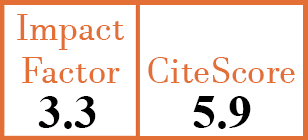Reviews
Medical cannabis for chronic pain management: questions and answers between clinical and medico-legal issues
V. Schweiger1, B. Ganz2, A. Martini3, P. Sarzi-Puttini4, L. Bazzichi5, E. Bonora6, P. Vendramin7, M. Nizzero8, L. Zamboni9, L. Polati10, F. Lugoboni11, D. Raniero12, E. Polati13, G. Del Balzo14
- Department of Anaesthesia, Intensive Care and Pain Therapy, University of Verona, Italy. vittorio.schweiger@univr.it
- Pain Therapy Centre, Palagi Hospital, Firenze, Italy.
- Department of Anaesthesia, Intensive Care and Pain Therapy, University of Verona, Italy.
- Department of Rheumatology, IRCCS Galeazzi-Sant'Ambrogio Hospital, Milan; and Department of Biomedical and Clinical Sciences, University of Milan, Italy.
- Department of Rheumatology, IRCCS Galeazzi-Sant'Ambrogio Hospital, Milan, Italy.
- Department of Anaesthesia, Intensive Care and Pain Therapy, University of Verona, Italy.
- Department of Anaesthesia, Intensive Care and Pain Therapy, University of Verona, Italy.
- Department of Anaesthesia, Intensive Care and Pain Therapy, University of Verona, Italy.
- Medical Service for Addictive Disorders, University Hospital G. B. Rossi, Verona, Italy.
- Department of Anaesthesia, Intensive Care and Pain Therapy, University of Verona, Italy.
- Medical Service for Addictive Disorders, University Hospital G. B. Rossi, Verona, Italy.
- Department of Diagnostics and Public Health, Section of Forensic Medicine, University of Verona, Italy.
- Department of Anaesthesia, Intensive Care and Pain Therapy, University of Verona, Italy.
- Department of Diagnostics and Public Health, Section of Forensic Medicine, University of Verona, Italy.
CER18538
2025 Vol.43, N°6
PI 1128, PF 1135
Reviews
Free to view
(click on article PDF icon to read the article)
PMID: 40556619 [PubMed]
Received: 15/01/2025
Accepted : 24/04/2025
In Press: 19/06/2025
Published: 27/06/2025
Abstract
Medical cannabis (MC) has gained prominence in recent years as a potential therapeutic option for various diseases, with a particular focus on chronic pain syndromes. While its efficacy remains uncertain, the global prescription rates of MC are significantly increasing. Therefore, pain therapists must be well-informed about several aspects of MC treatments, including efficacy, safety, indications, contraindications, pharmacological interactions, dosages, possible adverse events (AEs), such as the risk of addiction, and medico-legal considerations. Based on the available literature, the efficacy of MC on pain of different origins was described by the majority of Authors as statistically significant compared to placebo, with a mean reduction in NRS scale (0-10) from baseline between -0.43 and -0.70. The incidence of serious AEs was rare; however, MC may significantly increase AEs such as dizziness, tiredness, drowsiness and nausea. Common AEs included dry mouth, diarrhoea, constipation and euphoria. Absolute contraindications to MC include unstable cardiovascular diseases, psychotic symptoms, bipolar disorder, both ongoing and/or planned pregnancy and breastfeeding. Regarding addiction, the risk of cannabis use disorder (CUD) according DSM-V is about 29%. From a medico-legal perspective, the Italian legislation considers the MC a symptomatic support to standard treatments and accurately regulates its prescription on part of physicians. Moreover, the pain therapist must inform the patient about the legal implications of MC on driving (in relation to disability and license eligibility), work impairment, insurances, and the possession of firearms, in order to prevent possible negative repercussions on patients, on other subjects and on the pain therapists themselves.


